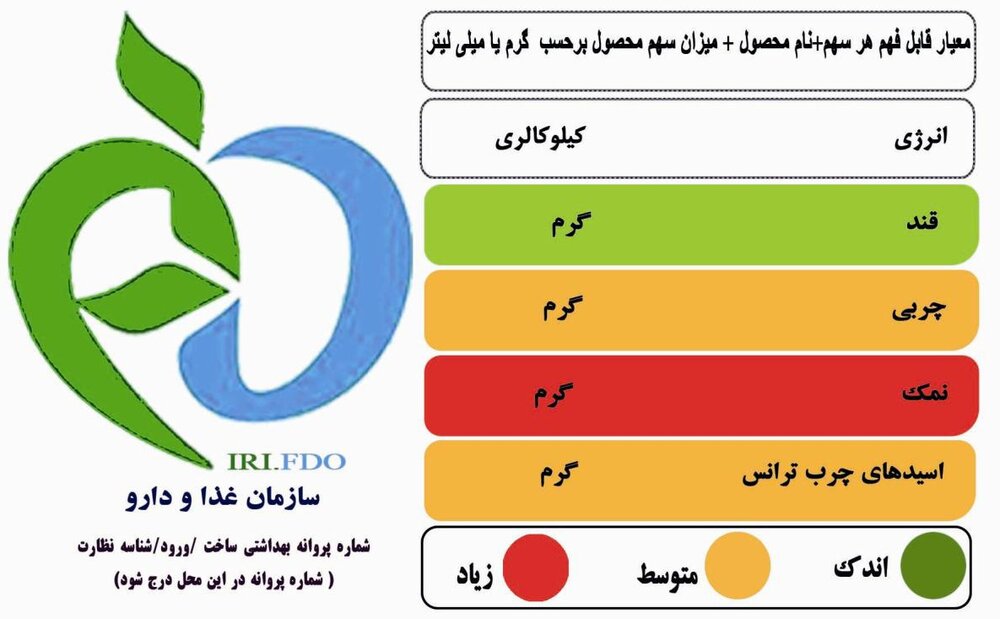‘Only 5% of Iranians aware of color-coded food labels on products’

TEHRAN – Only 5 percent of people in the country are aware of color-coded food labels on products, the Health Ministry’s public relations director Kianoush Jahanpour announced, IRNA reported on Monday.
Since summer 2017, Iranian manufactures are required to include ‘traffic light’ labels on food packaging to signify the fat, saturated fat, sugar, and salt content of the food stuff.
“Unfortunately people are not well informed about these labels to observe them in their choices,” he said.
Iran is one of the first countries in which all the products have the ‘traffic light’ labels on food packaging, he explained.
In early March, the Food and Drug Administration of Iran (FDAI) announced that it launched a system on TTAC (Track-n-Trace and Authentication Control) application through which users can check authenticity of food products.
The application, which was previously used for medicine, provides several services. Along with scanning the barcode and Checking UID, users have the possibility to check the scratch-code installed on the item in the system for authenticating. It is also possible to obtain information about certain drugs using its name or ATC code.
Tagged with the traffic light labels it help consumers to make healthier choices considering the amounts of unhealthy substances in food items.
The color-coded food labels are intended to help shoppers know at a glance whether a product contains a low, medium or high amount of fat, saturated fat, salt, sugar and calories and make choices for a more healthier and balanced diet.
Unhealthy diet amongst Iranians
In December 2018, Shahid Beheshti University of Medical Sciences announced that obesity and overweight have grown 5.5 folds over the past four decades in Iran.
Studies show that salt intake of Iranians amounts to 10.6 germs a day which almost doubles global standards.
Meanwhile, the Iranian Heart Association has announced that salt consumption in Iran is twice as much as global standards.
World Health Organization (WHO) recommends that adults consume less than 5 grams (just under a teaspoon) of salt per day; however, based on global statistics, most people consume too much salt—on average 9–12 grams per day that is around twice the recommended maximum level of intake.
Unhealthy dietary habits are the key deriver behind developing non-communicable diseases and switching from healthy traditional food to fast foods which contain high amounts of fat and sodium and low fiber are the causes of such disorders.
SB/MQ/MG
Leave a Comment